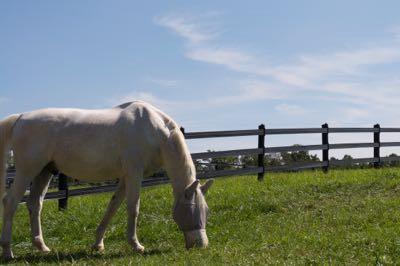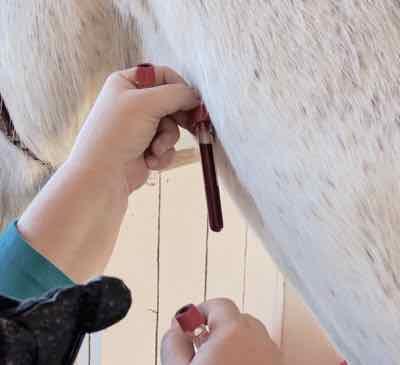When is Grass the Safest for Horses?
Some horses, not all, need to mind their P’s and Q’s when going out to graze on pasture grass. Why? Those pesky pasture grass sugars and starches can create problems, especially for horses with metabolic disorders, as they are at higher risk of laminitis. Don’t forget about the higher colic-risk horses, too; those sugars can also trigger colic. So when is grass the safest for horses?
Jump to video and shopping
In the spring
- The sun stimulates plants to photosynthesize, and we see this clearly in the spring as pastures bloom into green salad. This process blends the UV rays from sunlight, carbon dioxide from the air, and water to make food the plant uses. One by-product is oxygen, and another is chlorophyll, which gives plants a green color.
- This plant food is non-structural carbohydrates (NSCs) in the form of sugars, starches, and fructans. Fructans are in some types of grass, but not all. NSCs provide fuel for the plant to grow and reproduce. Structural carbohydrates create the “skeleton” of the plant, giving it shape.
- During daylight hours, those NSC’s collect as photosynthesis chugs along. The resulting afternoon grass has more sugar and starch than in the mornings.
- In the evenings, usually a few hours after sunset, the plant uses NSC energy to grow and prepare for reproduction.
- On overcast days, clouds will reduce the UV rays and slow their production of sugars and starches. This is not the case for all types of grass that your pasture may have.
- Spring grass has a deservedly bad reputation in the spring for triggering laminitis and colic. And it makes sense – more sunlight, warmer temps, and plants wake up from winter and grow like mad.
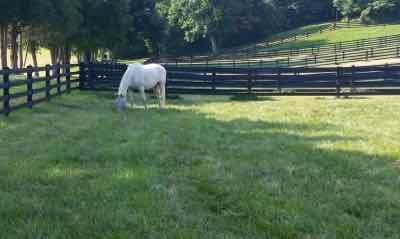
This pasture is pure salad, so very dense.
Other things that raise the sugars of pasture grass
- Grasses will hoard NSCs when they have undergone some stress. This hoarding ensures the plant’s survival, allowing it to bounce back, grow, and seed.
NSC values rise when:
- The grass is short. Most of the sugars are stored in the bottom 3 or 4 inches of the plant anyway, and short grass is now on the fast track to grow.
- The grass is long. This happens before most grasses go to seed. And it’s a MTYH that taller grass is safer. When it’s getting ready to make carbon copies of itself, many sugary things are happening.
- When pastures are overgrazed, some stressful things happen. The grass is shortened, and hooves can easily damage the roots. Animals grazing there may eat down to the earth, forever damaging that plant.
- When the weather swings. Droughts and excessive rain cause the grass to stockpile fuel.
- Freshly mowed grass. Haircuts make pastures look pretty and are necessary for weed and tick control, but now the grass has some catching up to do and needs energy.
Sugar levels in grass during the fall
- Fall is another risky time for laminitis. Lower temps put the grass under stress, and the plants want to hoard the sugars to survive. This is most dangerous when overnights are below 40ºF.
- Frosty mornings are also grass red flags, and grazing should happen after it’s warmed up.
- Fall is also dangerous for laminitis, as a horse’s natural hormone cycle raises their ACTH levels, triggering a cascade of reactions in their bodies that ultimately increase the laminitis risk.
Making grass safer
- There are two easy ways to make grass safer for horses. Limit the amount of grass they eat, and slow down your horse as they eat.
- There are two primary ways to limit the volume of grass consumed. One is to turn out for shorter amounts of time, and the other is to use a grazing muzzle.
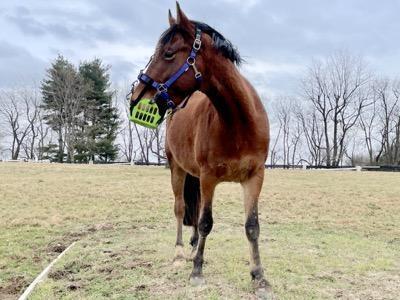
It’s a wearable hay net.
Limit the time on pasture
- It seems logical that one hour on grass is safer than two hours. Not really. Horses learn their allotted times, and will compensate by eating more and doing it faster.
- Yes, science measured this. Read all about the smarty-pants ponies here.
- And the danger is that more sugary, starchy pasture hitting the hindgut faster creates a higher potential for colic and laminitis. The microbes in the hindgut feast then become hungover and alter the pH of the hindgut. This change in pH can kill other types of microbes, creating gas and endotoxins. Excessive gas creates colic, and those endotoxins interfere with metabolism and insulin regulation, directly affecting the hooves. Bam, laminitis and colic are a higher risk.
Limit the volume of grass eaten while they are grazing
- Grazing muzzles reduce grass intake by between 30 and 80%. Why such a vast range? There are many styles of muzzles made by different manufacturers. Each type varies in opening shape and adjustability. Some muzzles have many slots, others a singular space.
- Some grazing muzzle styles have inserts that allow you to change the accessibility of grass according to your horse’s needs.
- Here’s the bonus of using grazing muzzles – they reduce the volume AND slow eating down. It’s a win-win.
- More ways to make pasture safer
Let temperatures be your guide
- Turn out your horse according to temperatures. In warmer months, overnight turnout can be helpful. A weather-dependent schedule also limits bugs and UV rays that annoy horses.
- In the cooler months, daytime grazing is best, usually after the morning chill has dissipated.
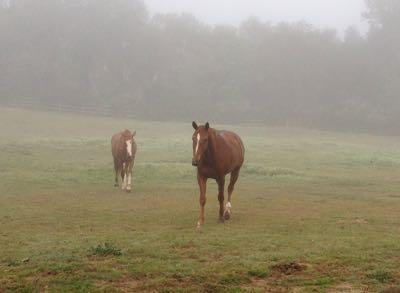
Read more : When Do Alternate Jurors Get Dismissed
This pasture has patches of over-grazed grass.
Prevent over-grazing
- If possible, rotate pastures to avoid horses eating down to the earth. You could also add slow-feeder hay systems into the paddocks to encourage nibbling from hay instead of grazing. Sometimes this works; other times it does not.
- Keep your pastures mowed to that perfect in-between height. Find the perfect balance of not too short to create stress, and not so long that going to see starts to happen.
- Since mowing can trigger stress, wait a day before your horse enjoys the green salad.
Transition your horse slowly to any diet change
- Pasture can be considered a diet change, and as such, your horse needs 2 weeks to acclimate slowly. Examples of this include:
- A horse traveling for shows that spends time on the showgrounds has a few diet changes sometimes. When they return home, adding pasture is a diet change.
- Horses that move from one type of grass to another. Think of this as replacing one type of hay with another.
- The sudden emergence of spring grass. One week it’s brown; the next week, it’s bright green. This may happen in your area or not.
Bloodwork to test for metabolic disorders is always more affordable than treating laminitis or colic.
Know your horse’s risk level
- Any horse can indeed get colic or develop laminitis at any time. But is the risk more for your horse?
- The primary factors to consider are your horse’s weight and metabolic status. Your vet can test for all manner of metabolic disorders, like PPID (formerly Cushing’s) and equine metabolic syndrome (EMS). Incidentally, it’s not always overweight horses that develop metabolic problems. Weight loss and decreased muscle tone show up in PPID horses.
- Other factors contributing to risk are age, breeding, fitness, other foods in the diet, and history of hoof or digestive issues. When you and your vet mash all of those factors together and your particular pasture situation, you end up with a fantastic plan for your horse.
Dry lots are an option, too
- For some horses, no pasture is safe. Dry lots are one way they can enjoy turn out, hopefully with other horses and slow feeders for hay.
- The key to a great dry lot setup is space for movement and play, many feeding stations, shade, horse toys, and the company of other horses.
- Do invest in your horse’s health by knowing their metabolic status and providing enriching ways of “being a horse.”
Stock up here for your horse supplies! As an Amazon Associate, I earn from qualifying purchases, but it’s ZERO extra cents to you. You can also visit my Amazon storefront here: PEG storefront.
Thank you!
Source: https://t-tees.com
Category: WHEN

